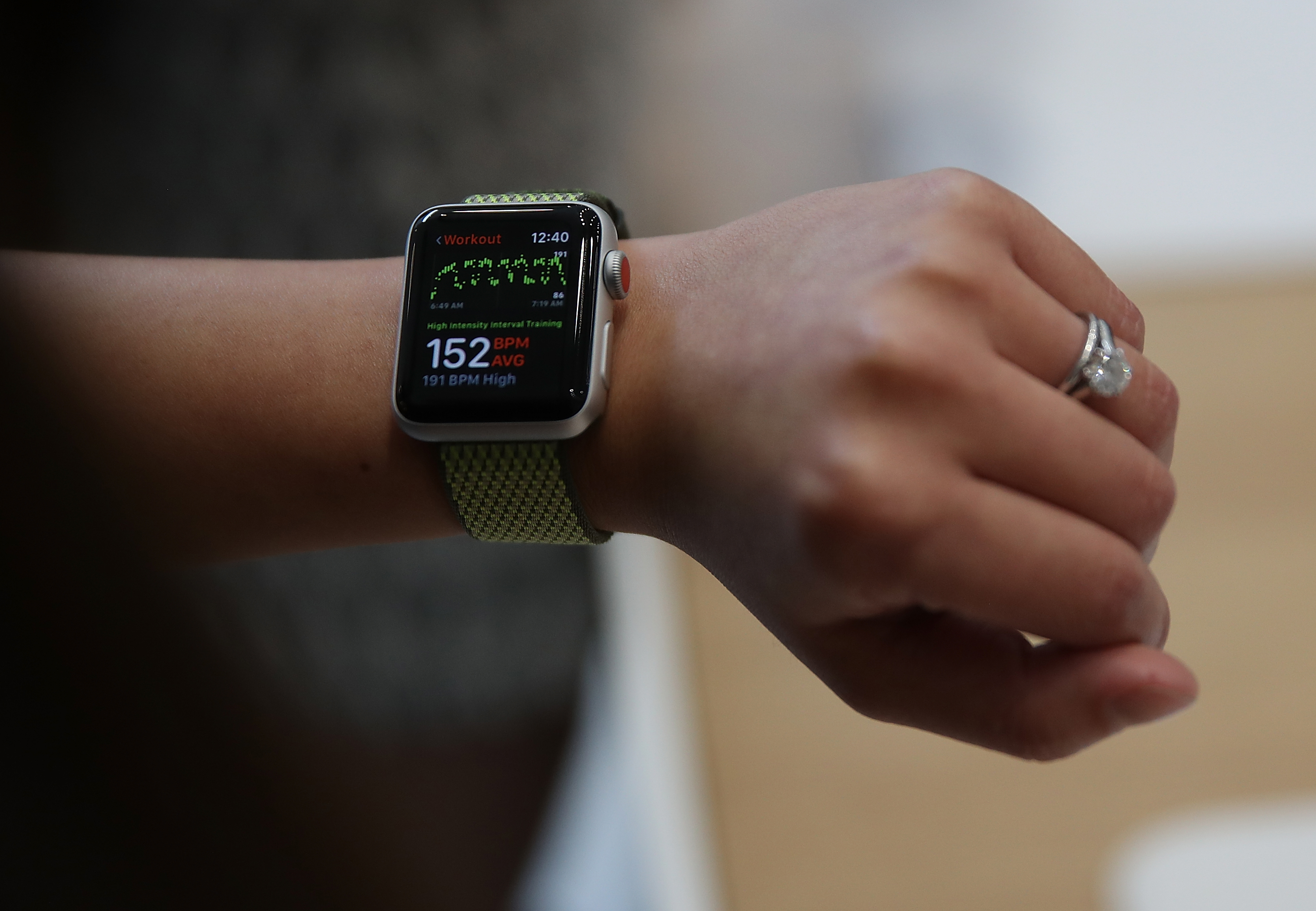Why the Apple Watch is still a business plan in search of a product
Who's yearning for the Apple Watch? The company or the consumer?


It's Marketing 101: When you want to sell a product, you extol its virtues. But when Apple recently announced its new Watch 3, the company pitched the device as more than merely practical or fun. In the video that preceded the announcement, the company suggested the Watch helped people become better versions of themselves — and even suggested it can help save lives. Maybe this is Marketing 102, updated for the 21st century: When you really want to sell a product, make it seem like a person's life will be empty without it.
So when reviews of the latest Apple Watch landed this week, it was a surprise to see that disappointment abounded. Numerous reviewers had connectivity problems, while almost everyone found the battery life lacking — one tester saw their power drop to 30 percent by noon. More generally, while the Watch can hardly be called a failure, it hasn't exactly become a blockbuster hit either, in no small part because the promise of the device — a vital piece of tech for tracking health, staying connected, and being safe — has yet to entirely come to fruition.
The problem is that for all the lofty rhetoric, wearables as a category aren't yet either especially necessary or in demand. While Apple obviously keeps updating the Watch, Samsung and LG continue to partner with Google to make their own Android Wear watches, and all sorts of other wearables continue to be made. Despite the lack of success, everyone keeps throwing things at the wall to see what sticks. It can seem puzzling.
The Week
Escape your echo chamber. Get the facts behind the news, plus analysis from multiple perspectives.

Sign up for The Week's Free Newsletters
From our morning news briefing to a weekly Good News Newsletter, get the best of The Week delivered directly to your inbox.
From our morning news briefing to a weekly Good News Newsletter, get the best of The Week delivered directly to your inbox.
The reason for their enthusiasm is actually straightforward: Wearable tech represents the pinnacle of modern tech's ambitions. The goal is to have tech be indispensable. Like Apple's marketing both suggests and yearns for, eventually, you will not be able to imagine life without something buzzing attached to your body.
In the meantime, however, the Apple Watch can often seem decidedly un-Apple like. Beyond the connectivity problems with the new cellular-enabled Watch — which, it seems, will likely be able to be fixed with a software update — the interface for the Apple Watch has now gone through four distinct iterations. Unlike the very purposeful and decisive design associated with the iPhone and iPad, it is almost like the Watch is a public prototype, as Apple tests differing ideas for how a smartwatch should work on its loyal fans.
Perhaps the uncharacteristic waffling reflects the uncertainty of what a wearable is even supposed to do. Even the new Watch that makes calls can't substitute for an iPhone, but instead acts as a kind of backup while mostly being a heart-rate monitor or run tracker. Yet, a smartwatch is also much more than a fitness accessory, offering as it does notifications and apps and, now, calls and messages even when your phone isn't nearby. It is both a standalone device yet not, sometimes an accessory but also something more.
As such, if even Apple's attempt evinces some confusion then it's no wonder such indeterminacy is echoed in the broader wearable market. Jawbone, a once-popular company that made fitness trackers, shut down this summer. The smartwatch company Pebble was bought out by Fitbit after profitability proved impossible — but even that latter company's future is hardly assured. Though Fitbit's stock has rebounded somewhat recently, it has still collapsed over the past year. And despite Android being the dominant operating system by far, Google's own efforts have seen little real success, with Samsung's and LG's devices failing to capture much consumer interest.
A free daily email with the biggest news stories of the day – and the best features from TheWeek.com
In part, this seemingly false start for the wearable stems from an inherently limited market. If much of the appeal for wearables comes from their fitness tracking features, there is a natural ceiling; there are only going to be so many people who run, and only so many runners who want their exercises tracked with more detail or convenience. Moreover, though having notifications for calls or messages on one's wrist is certainly convenient, it is also perhaps too convenient: Many people want less intrusion by their tech, not an even more efficient form of it. A smartwatch can seem excessive.
It is not that there aren't any compelling use cases for wearables, particularly the new Apple Watch. Assuming the connectivity woes get fixed, the ability to leave a phone at home for a run, walk to the store, or even to read a book in the park but still be reachable by, say, ailing family members or one's kids, seems like a real benefit. It offers the upside of staying connected while mitigating the downsides of potential over-connection that come with a modern smartphone.
Yet it is this easy slippage into being a vital part of one's life that explains why tech companies are so eager to keep on trying at the wearables category despite a comparative lack of success so far: If wearables take off, they present an opportunity in which consumers will never be away from their tech.
The idea reaches its apotheosis in smart glasses. The first example was of course Google Glass, that failed experiment from the search giant that would overlay data onto your field of view, but struck people as too unwieldy and expensive before it was shelved as a consumer device. But recent news has Amazon bringing its Alexa assistant to a pair of smart glasses, resurrecting the idea, and crystallizing the tech ideal. The glasses would work by conducting sound through one's bones, almost literally placing Amazon's assistant inside one's skull.
The symbolism may be unsettling, but it's if nothing else accurate: What could better encapsulate the desires underpinning the contemporary digital economy than a subsumption of attention by the behemoths of technology? It is not that there aren't myriad benefits to this reality — the constant access to information, the persistent connectivity to those we love, the novelty waiting around every corner. But when a mode of apprehending reality is pitched as life-altering, it's at least worth asking whose interests are best served by this unending connection. At a certain point, tech you never want to take off your wrists starts to seem an awful lot like a pair of handcuffs.
Navneet Alang is a technology and culture writer based out of Toronto. His work has appeared in The Atlantic, New Republic, Globe and Mail, and Hazlitt.
-
 Political cartoons for December 6
Political cartoons for December 6Cartoons Saturday’s political cartoons include a pardon for Hernandez, word of the year, and more
-
 Pakistan: Trump’s ‘favourite field marshal’ takes charge
Pakistan: Trump’s ‘favourite field marshal’ takes chargeIn the Spotlight Asim Munir’s control over all three branches of Pakistan’s military gives him ‘sweeping powers’ – and almost unlimited freedom to use them
-
 Codeword: December 6, 2025
Codeword: December 6, 2025The daily codeword puzzle from The Week
-
 The pros and cons of noncompete agreements
The pros and cons of noncompete agreementsThe Explainer The FTC wants to ban companies from binding their employees with noncompete agreements. Who would this benefit, and who would it hurt?
-
 What experts are saying about the economy's surprise contraction
What experts are saying about the economy's surprise contractionThe Explainer The sharpest opinions on the debate from around the web
-
 The death of cities was greatly exaggerated
The death of cities was greatly exaggeratedThe Explainer Why the pandemic predictions about urban flight were wrong
-
 The housing crisis is here
The housing crisis is hereThe Explainer As the pandemic takes its toll, renters face eviction even as buyers are bidding higher
-
 How to be an ally to marginalized coworkers
How to be an ally to marginalized coworkersThe Explainer Show up for your colleagues by showing that you see them and their struggles
-
 What the stock market knows
What the stock market knowsThe Explainer Publicly traded companies are going to wallop small businesses
-
 Can the government save small businesses?
Can the government save small businesses?The Explainer Many are fighting for a fair share of the coronavirus rescue package
-
 How the oil crash could turn into a much bigger economic shock
How the oil crash could turn into a much bigger economic shockThe Explainer This could be a huge problem for the entire economy
